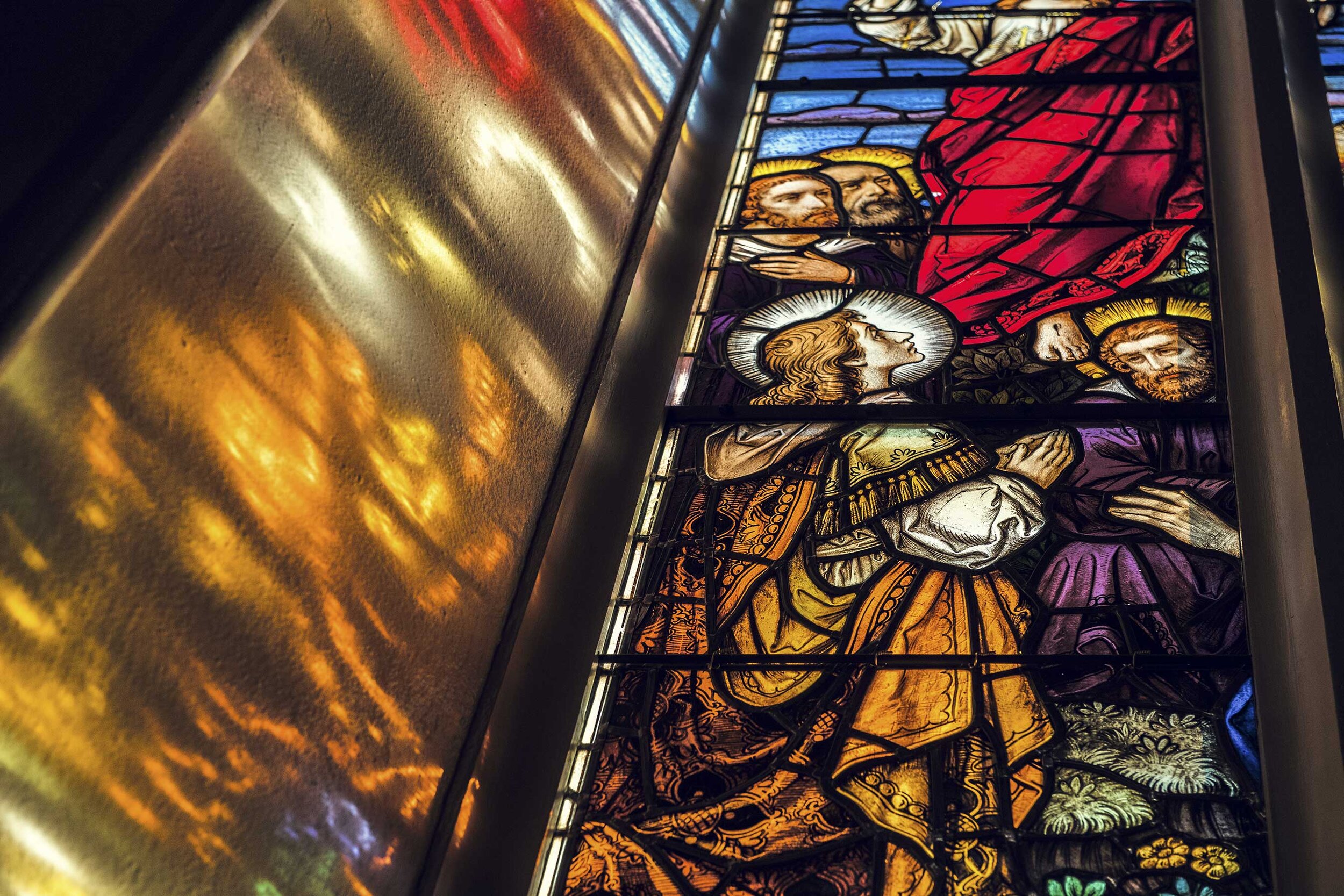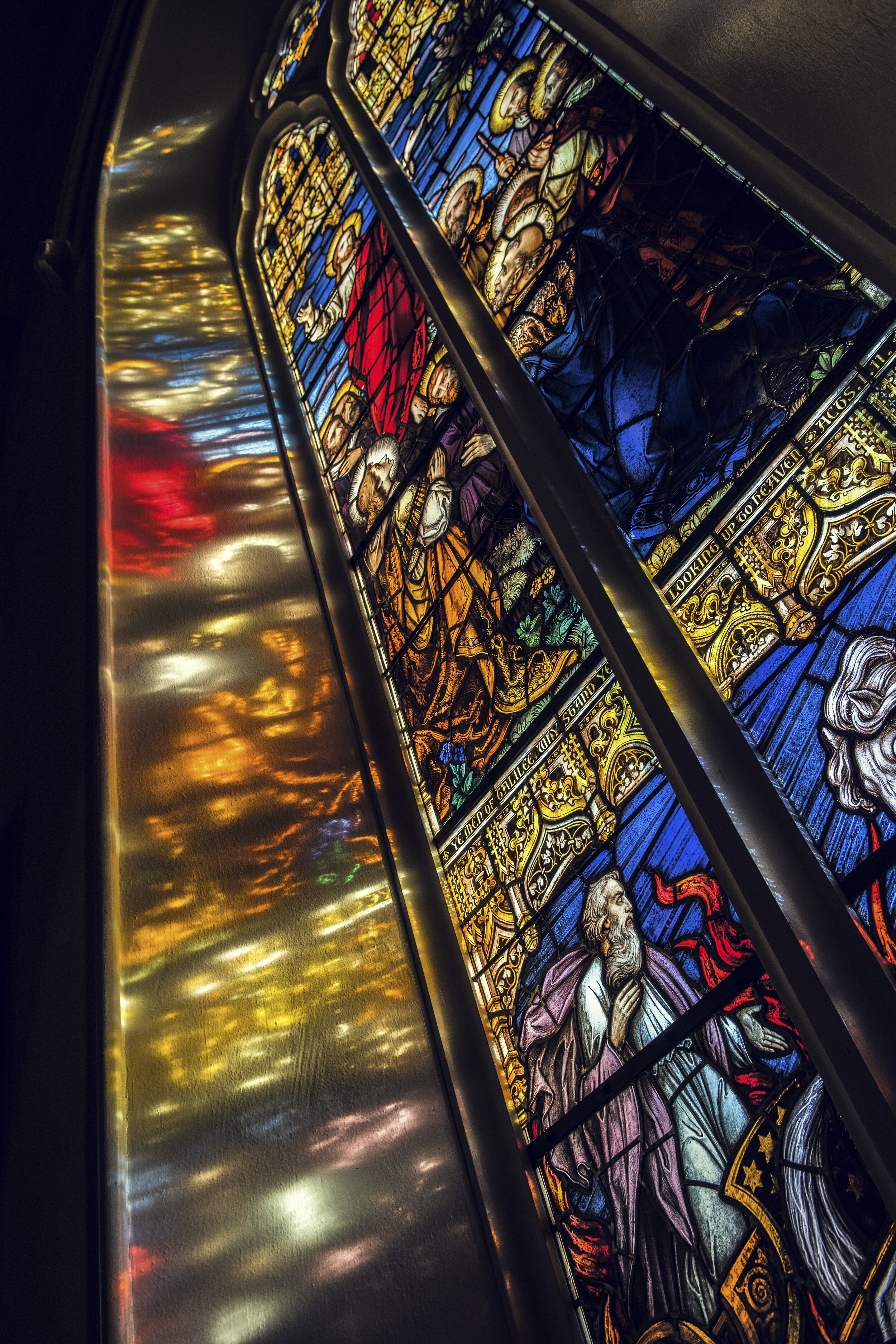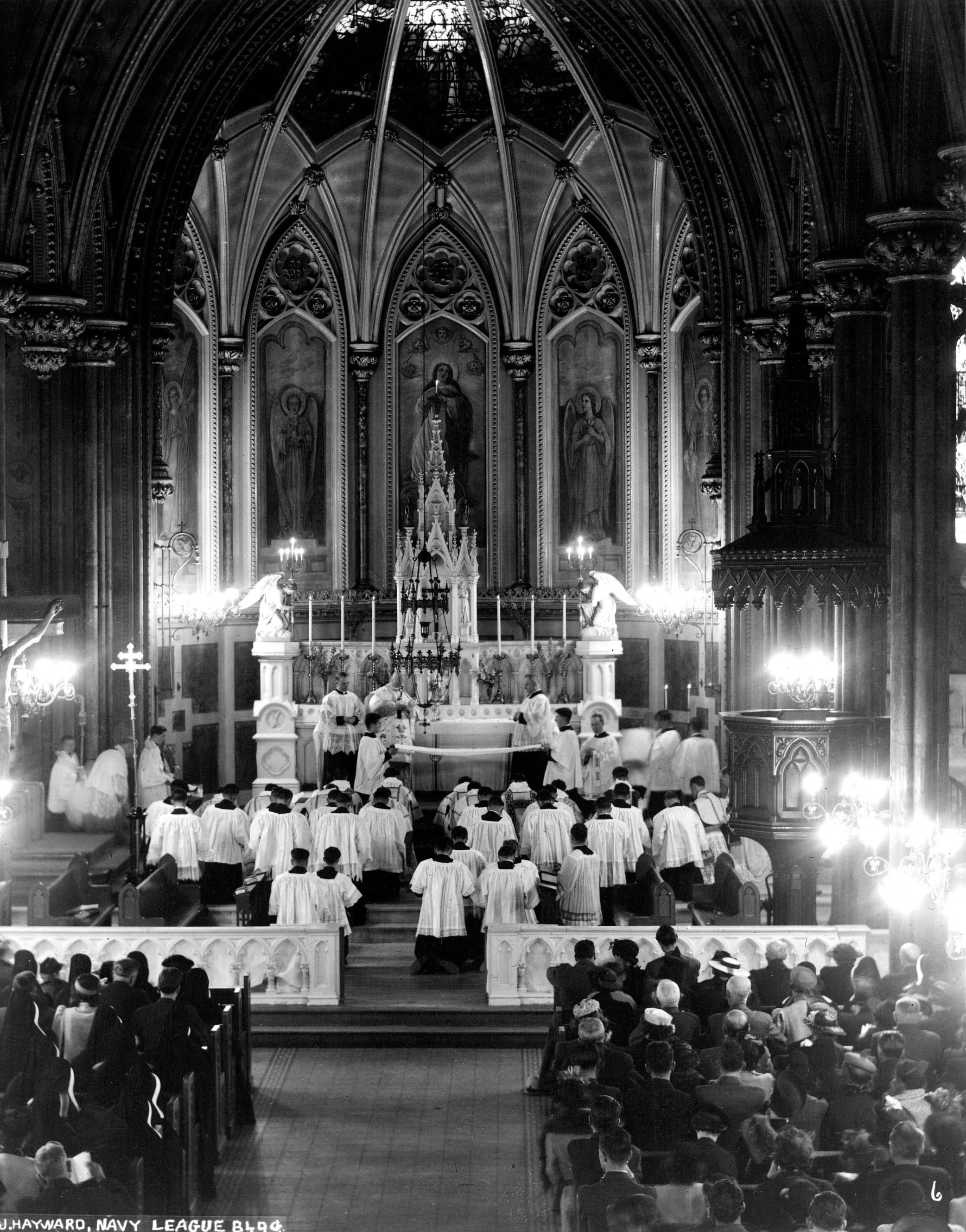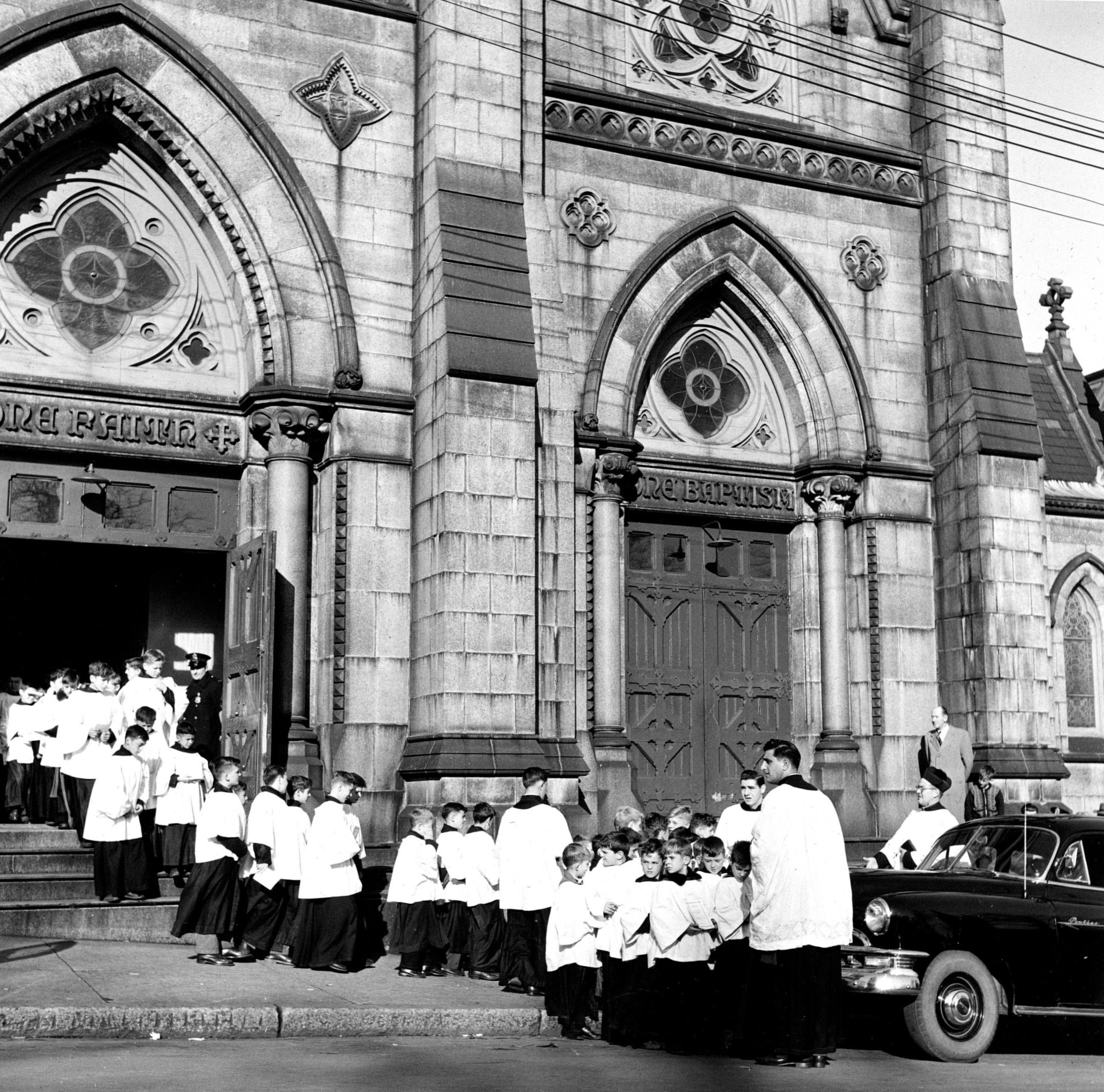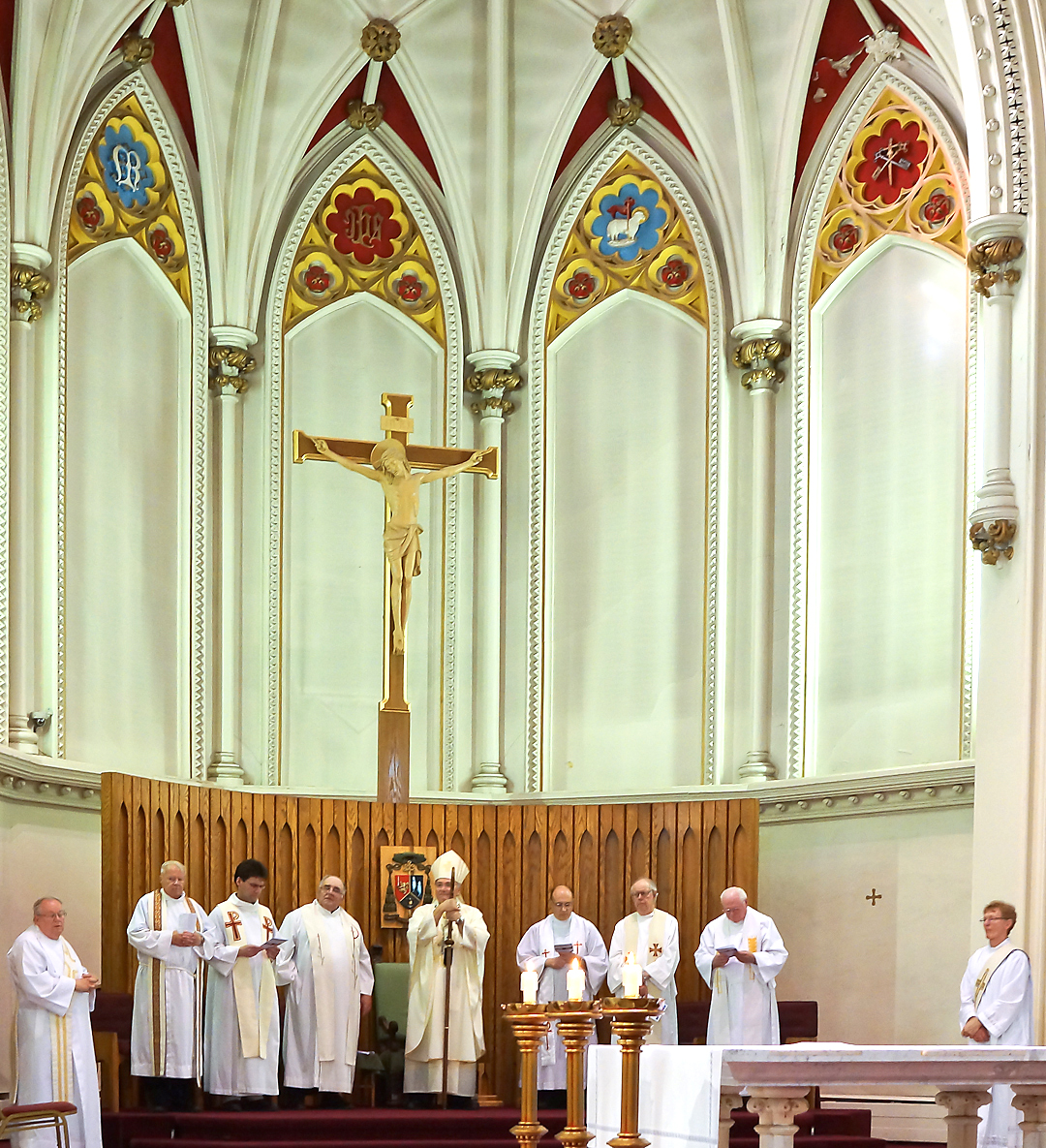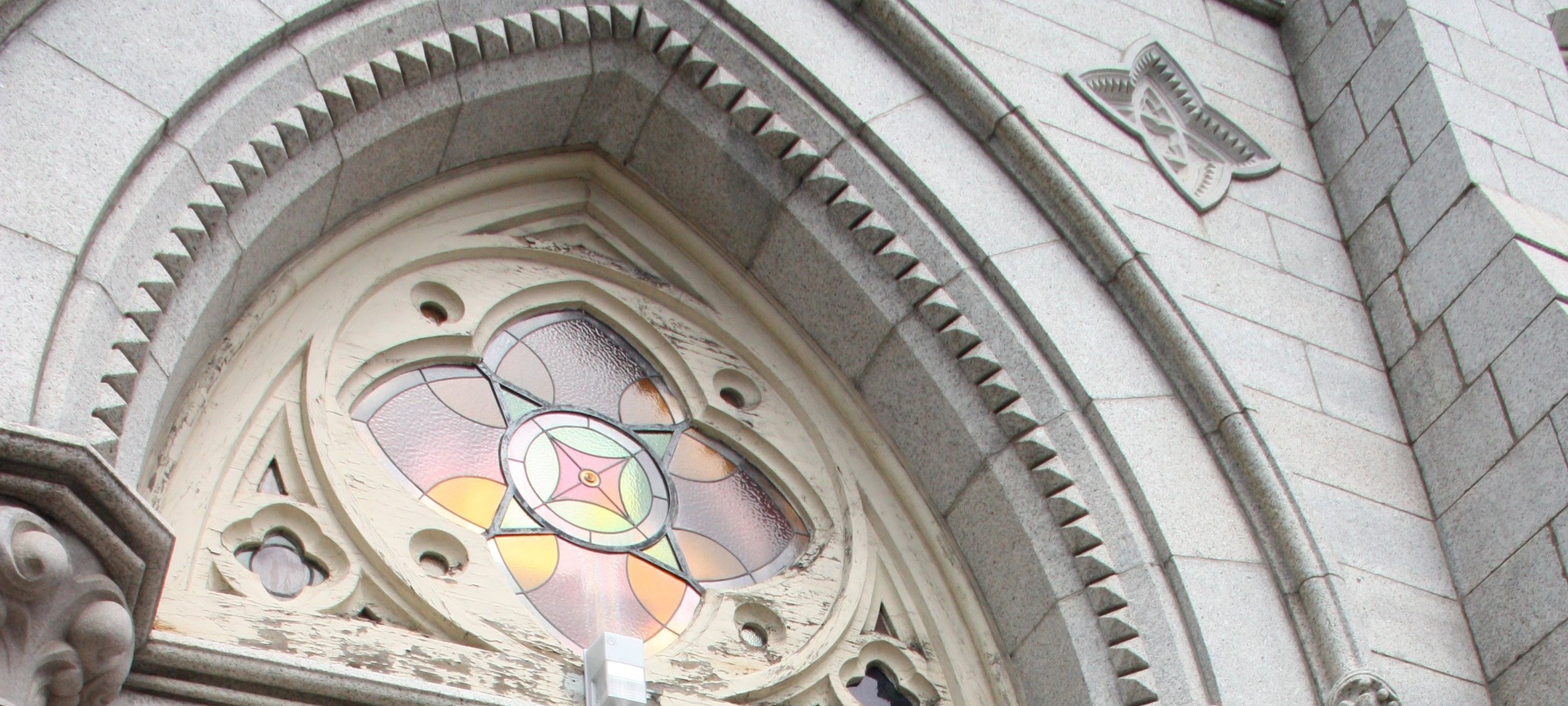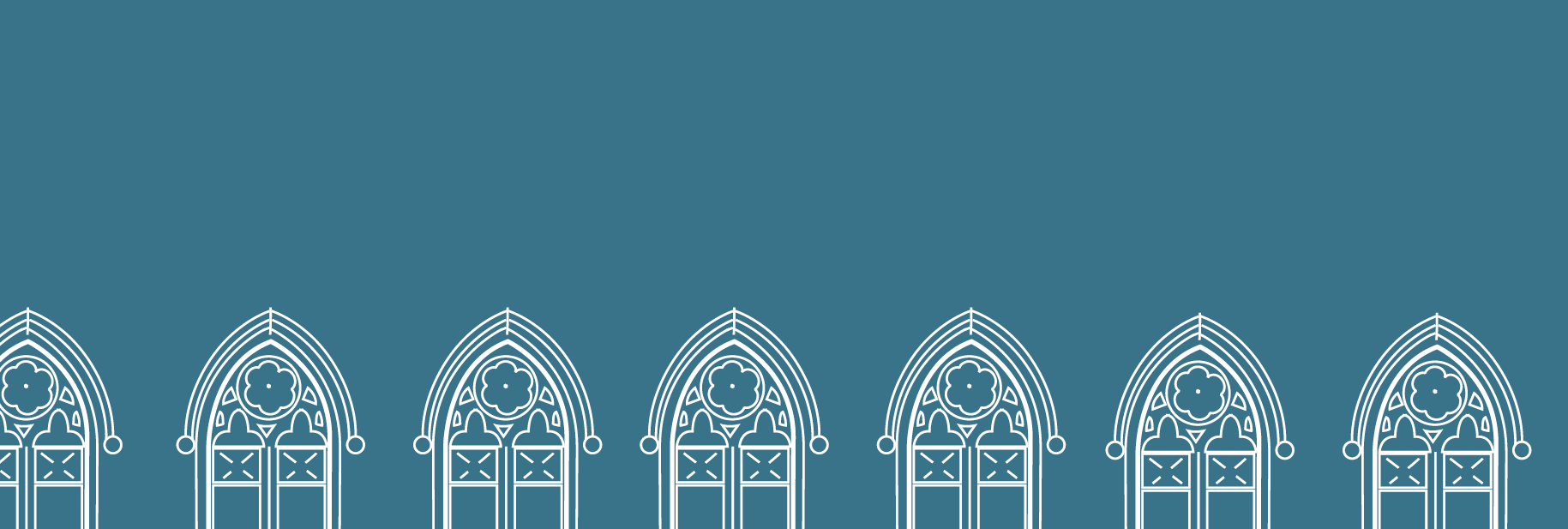
HISTORY AND HERITAGE
Saint Mary’s Cathedral Basilica is an important part of Halifax’s heritage. Throughout the year, the Basilica is a destination on many visitors’ itineraries, while locals have come to see it as an enduring reminder of their city’s storied past. The Basilica gives visitors the chance to literally walk in the footsteps of those who helped build this impressive landmark as they stroll through this National Historic Site and admire its Norman-Gothic craftsmanship.
Our historic buildings are a physical link to our shared past. They help us define who we are and where we’ve come from. When we do the work required to preserve bricks and mortar and cultural signposts of significant buildings like Saint Mary’s, we are helping preserve the stories for future generations.
A Cultural Centerpiece
The arts can be an incredible force that brings a community of people together, giving them the opportunity to share their enjoyment and appreciation of a performance or exhibit. Of no small importance is the venue in which these events take place. In many ways it becomes part of the experience by enhancing what the visitor sees, hears and feels. Saint Mary’s Cathedral Basilica hosts a number of arts and cultural events, giving many their first-ever look at the Basilica’s interior and an incredible opportunity to appreciate its beauty and historical significance.
music
From the many choirs whose refrains have glorified the Basilica’s archways for almost 200 years, to today’s choral groups and ensembles who raise their voices in song within our walls, music is a deep-rooted part of a visit to Saint Mary’s.
Installed in 1960, the Basilica’s Casavant Frères pipe organ is dedicated to parishioners who served in World War II. With 38 stops and 2,856 pipes, ours was the first organ of classic design in the Maritimes, and is still regarded as one of the finest sounding instruments in Eastern Canada.
Our 11 cathedral bells were originally installed in the steeple and blessed by Archbishop Michael Hannan in 1879. Though some were damaged in the Halifax Explosion of 1917 they were recast and re-installed as part of the first centenary celebration of Saint Mary’s. The bells honour those from the cathedral parish who served in World War I and are as much a part of Halifax’s acoustical landscape as the noon cannon from Citadel Hill or the fog horn from George’s Island lighthouse.
stained glass
Saint Mary’s stunning stained-glass windows feature a combination of Old and New Testament scenes. The current windows, which replaced those shattered in the Halifax Explosion of 1917, were created by Franz Mayer & Co., are Munich-style windows in which the leaded seams are camouflaged in the design so as not to detract from the scene. Each panel tells a story that combines elements of Old and New Testament stories. A quiet moment in the Basilica when the morning sun streams through the windows at just the right angle is a moment a visitor won’t soon forget.
art
Throughout its history, the art of Saint Mary’s Cathedral has illuminated and inspired visitors and parishioners, providing a focus for reflection and contemplation. What better place to contemplate great art than a sanctuary of worship, reflection and meditation?
Saint Mary’s remarkable paintings featuring the Stations of the Cross were donated to the Basilica and presented to Archbishop Thomas Connolly (tenure 1859-1876). They are copies of Frederich Overbuch originals that once hung in the Lateran Palace in Rome.
The five historical murals located behind the altar at Saint Mary’s are undergoing an exciting restoration. Over 100 years old, these panels featured finely layered oil paintings of Mary of the Ascension in the centre, flanked by two angels on either side. In 1950, the paintings were covered with white wall paint, presumably as a cost-saving measure in the austere post-WWII years. The results of the painstaking restoration will be exciting for religious and art historians, not to mention the Basilica’s parishioners and visitors.
Building and Architecture
Originally created to affirm the ascendance of religious freedom and tolerance, Saint Mary’s began as St. Peter’s Church, a small, wooden-framed building with neither bell nor steeple. The congregation rather quickly outgrew its small chapel and in 1820, Archbishop Thomas Connolly hired New York architect Patrick Keely to draw up plans for a larger and grand Saint Mary’s Basilica.
The new stone church – the first in Halifax – with its sandstone face, featured the arched windows and doorways of the Gothic style coupled with pillars of Georgian style architecture, with galleries on the east and west sides. This impressive new structure required the building of an immense and elaborate roof. Since Nova Scotian shipwrights were the most talented and experienced carpenters available, they were employed to create the Basilica’s crowning glory. The result is a spectacular ceiling and roof the form of which calls to mind the hull of a ship. The original planed beams of that roof are still in place today.
Saint Mary’s Basilica’s imposing granite spire features Gothic, Norman and Germanic design elements carved of stone from the Queen’s Quarry on Halifax’s Northwest Arm. Soaring into the sky to a height of 189 feet, Saint Mary’s Basilica remains the tallest free-standing granite spire in North America.
Faith
Saint Mary’s Cathedral Basilica is a living, vibrant mother church for the Archdiocese of Halifax-Yarmouth which includes 68 parishes and 25 missions, 83 priests and 44 deacons.
The Basilica has been a place of worship for almost 200 years and is a physical presence at the heart of its city, presided over and attended by the Archbishop of Halifax-Yarmouth. It is also a strong symbol of faith for all Catholics who visit from around the world and for generations of immigrants. It is a special place where thousands have worshipped and celebrated the most significant ceremonies of their lives: couples have been joined in marriage; children have been baptized into the church; loved ones have been laid to rest.
VIDEO Gallery
photo Gallery
Select any photo to enlarge for a closer view.



